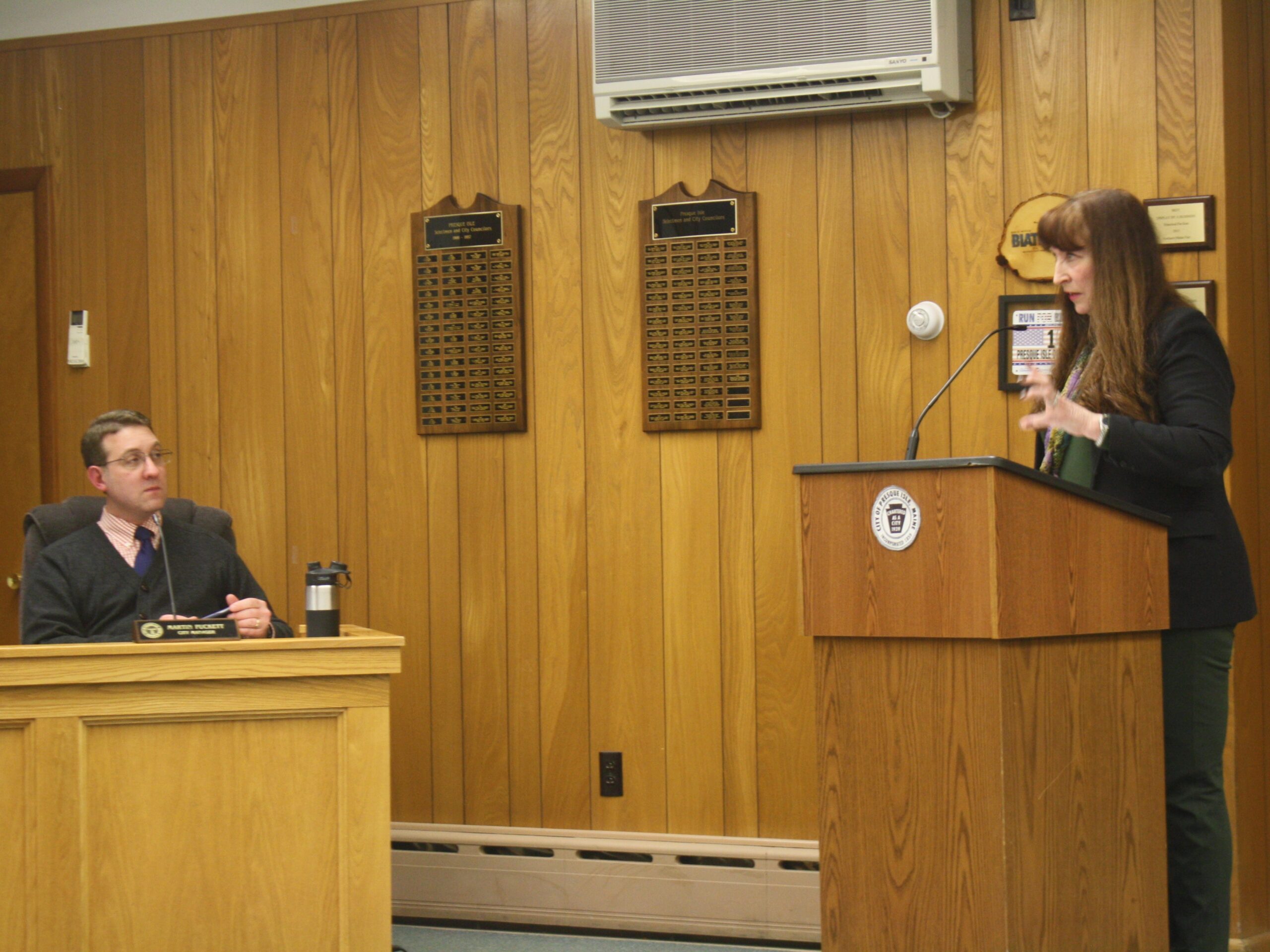
PRESQUE ISLE, Maine — A city of Presque Isle poll conducted in November and December shows that elderly residents are generally happy with where they live, though there were some parts of Star City life they were not completely satisfied with, including accessibility on public sidewalks and the weather conditions.
Presque Isle Resource Development and Public Information Officer Kim Smith announced the results of the survey at the Presque Isle City Council meeting on March 4. The results will be used by the city to write an action plan for seniors in the next few months.
In May 2018, Presque Isle became the 243rd community to enroll in the AARP Network of Age-Friendly Communities. Cities and towns that want to join the network must demonstrate that their municipalities are devoted to creating communities that serve residents of all ages by providing accessible public services.
Smith described the survey she shared on Wednesday as the first step in the creation of an action plan for Presque Isle seniors that is due on April 30 — two years after the city’s age-friendly designation. Smith said she was heading a committee of local leaders, including Presque Isle City Councilor Craig Green, that will write the action plan.
The poll was far from a scientific survey but had a vast range: 154 people across Presque Isle. Seventy-four percent of respondents said they were between the ages of 70 and 89; 16 percent were in their 60s, while 6 percent were 90 or older. Seventy-five percent were female and 25 percent male.
Most reported being happy about living in Presque Isle and had no plans to leave. Sixty percent of participants said Presque Isle was a “good” place to live as you age, while 34 percent described it as an excellent place. A majority — 56 percent — said it was “extremely important” to them that they remain in Presque Isle.
Fifty-six percent said they felt valued “most of the time,” and 32 percent said they felt valued in general. Only 12 percent said they didn’t or didn’t “usually” feel valued as an older resident in Presque Isle.
Ninety-five percent said public buildings were accessible for people “of all abilities.” Eighty-six percent said restrooms in public buildings were accessible to those of “different abilities.” More generally, 80 percent said handicapped parking spaces were sufficient in public places.
Some of the most substantial criticism from residents was concerning Presque Isle’s sidewalks: 68 percent said the sidewalks were in good condition, being safe for pedestrians and those in wheelchairs. But 32 percent said they were not, with one commentator writing that while most sidewalks were easy to walk on, some had “raised cracks” that the city should smooth over for accessibility.
One person said that many drivers ignore pedestrians in crosswalks, and speedily drive past them as people try to cross. The person said that pedestrians have come close to being knocked down “several times” because of this.
The survey also looked at leisure activities and socializing available to older residents. The majority — 52 percent — of those surveyed said they lived with a spouse, with 40 percent reporting living alone.
The numbers seemed to indicate that most older residents had active social lives. Sixty-seven percent said they spent time with others several times a week or more. Eight residents surveyed — 5 percent — said they spent time with others once a month or less.
Some of the factors responders listed that made it difficult to travel within Presque Isle were weather, which was very important to 74 percent, and darkness for 63 percent. Both would pose issues for a population in which 82 percent said they traveled around the city via a personal vehicle.
The surveys were available at the New York Life Insurance office, Leisure Village and Gardens — a senior apartment complex — Presque Isle City Hall and Northern Light AR Gould’s Healthy Aging group.
Smith said AARP had given the city of Presque Isle a livability index of 53 — with 50 being the number of an average city.







